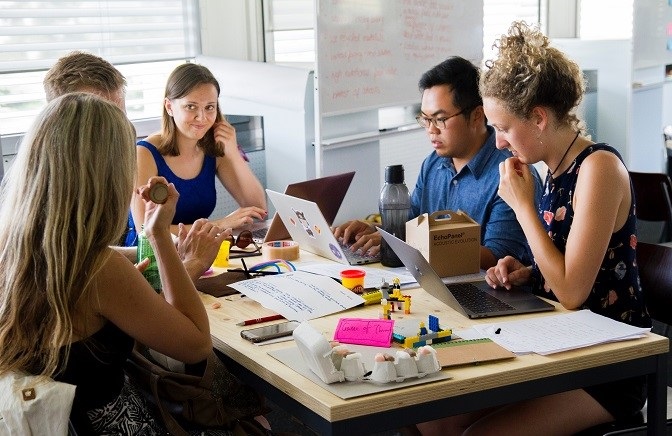by Khara Croswaite Brindle
What does it mean to feel connection with another person? How do you know when you are building rapport in your interactions with others? For many of us, connection starts with body language and conversation when determining relatability and ongoing engagement. Engagement can lead to belongingness and belongingness is a crucial element of positive mental health and overall wellness. So why wouldn’t we want to pursue belongingness and connection in our relationships and throughout our lives in support of optimal wellbeing?
Monkey See Monkey Do
Connection can be measured externally in how we interact with one another, but also internally through brain activity. Mimicking one another, often described as mirroring, was first discovered by Giacomo Rizzolatti, MD and his colleagues when studying monkeys. Rizzolatti recognized that there was similar, observable brain activity indicating pleasure when a monkey consumed a banana as when the monkey observed a researcher consuming a banana. This brain activity involving neurons, called Mirror Neurons, provided implications that our brain activity responds in relation to others, thus encouraging development of an empathetic response. A more recent article was published in the UK on research involving infants and their mothers. With eye contact, the brain waves in the infant responded and attempted to synchronize with their mother, implying efforts at deeper connection and communication, according to scientists at the University of Cambridge.
Bonding in Business
Mirror neurons are important for close relationships; however, they can be influential in working relationships as well. Business gurus have developed interpersonal programs to support connection and reciprocity in business interactions, including awareness of body language, eye contact, and mannerisms. These programs can teach a person to be more aware of cues in social interactions and introduce subtle mirroring behaviors to increase engagement, likeability, and reciprocity.
Mirroring behavior in conversations is adaptive, such as noticing when one party begins to unconsciously mimic the other in their posture, speech, and/or gestures during an interaction. As you can see from the picture we’ve chosen above, several members of the group are mirroring one another in their hand gestures, indicating connection or attempted connection in the moment. When learning these interpersonal skills for yourself, you may experiment with subtly shifting your posture to mimic the other party, exploring any observable differences in the interaction, including how you each feel towards one another. Mirroring research shows that when you make subtle attempts to mirror another person, they will find you more approachable, likeable, and connected, all which can be valuable when conducting working interactions or achieving rapport.
Generational Gaps
Engagement in working and personal relationships can support successful interactions, and it can also change how a person feels about themselves, including shifts in self-confidence and self-worth. Jean Twenge, a Psychologist researching generational differences including mental health, substance use, technology, and social engagement, speaks of this in depth in her book iGen. Her book highlights the dramatic shift in social interaction away from face to face contact to more technology-based connection. Her book also highlights a possible correlation between technology and lack of belongingness, even when those surveyed reported, on average, more than three hours per day of technology use including social media. Twenge’s research identifies some concerns about connection, including individuals reporting minimal person to person engagement, low self-confidence or preparedness in social situations, and thus identifies questions needing to be answered around technology and mental health.
Regardless of how we measure it, connection is important. One way of encouraging connection is getting out in the world and finding people who have things in common. This can be a pleasant opportunity to engage over shared interests and build relationships. Identifying activities you enjoy can be a starting point to engaging others around shared interests, with organizations like Meetup.com bringing groups of people together around enjoyable experiences. Pushing yourself to get out and meet people can have a positive result, as belongingness and social interaction continue to be vital parts of what it means to be human.
“You’re imperfect, and you’re wired for struggle, but you are worthy of love and belonging.” Brene Brown
Khara Croswaite Brindle, MA, LPC, ACS, is a Licensed Professional Counselor in the Lowry Neighborhood of Denver, Colorado. She received her Masters Degree in Counseling Psychology from the University of Denver with a focus on community based mental health. Khara has experience working with at-risk youth and families, including collaboration with detention, probation, and the Department of Human Services. Khara enjoys working with young adults experiencing anxiety, depression, trauma, relational conflict, self-esteem challenges, and life transitions.


